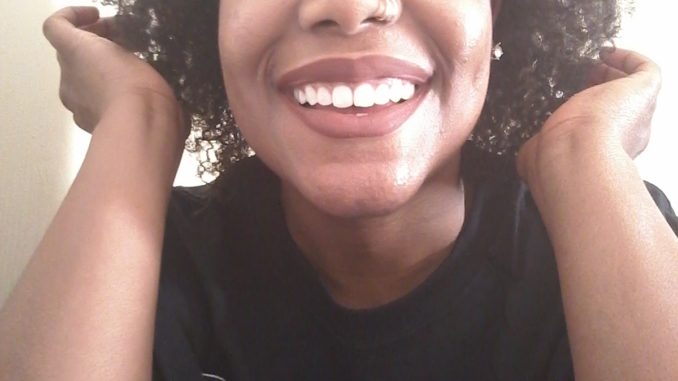
Going natural has benefited my hair in a million ways. I’m entering a little over 3 years into the natural hair world but I’m constantly researching and educating myself in the science of hair growth. Once you master how the hair works, you will use products more effectively.
Have you ever used natural oils in your hair and wasn’t feeling the hype? Maybe the oils were too drying, weighed your hair down or never absorbed into the hair shaft? Did the oils make your scalp flaky? Every dilemma listed is true if you are using the wrong kind of oil for your hair, the wrong way.
I learned the true meaning behind moisturizing and sealing, which I’m going to breakdown how to use different oils for maximum results. Regardless of hair type and texture anyone and I mean anyone will benefit with proper usage of the oils and more knowledge about their hair.
Raise your hand if you noticed oils in your shampoos and conditioners? Do you know why specific oils have been added? Continue reading and I’ll explain…
MOISTURIZING OILS
The purpose is to add moisture to your lovely tresses by nourishing your scalp and hair shaft, resulting in healthier hair with added benefits such as:
- Non-flaky scalp
- Reduced itchiness
- Soften strands
- Enhanced elasticity
- Re-conditioned hair
Types of Moisturizing Oils
- Coconut— main oils that penetrate hair shaft
- Avocado— main oils that penetrate hair shaft (great for low density/thin hair)
- Olive— main oils that penetrate hair shaft (great for low density/thin hair)
- Rosemary
- Sunflower
- Apricot (great for low density/thin hair)
- Lavender
- Babassu
But how do I get those results?
The only way to receive benefits is to add these luscious oils to your washday routine. Throughout the washing process we are stripping our hair of natural oils. With the elimination of natural oils, our scalp becomes dry and itchy with hair strands appearing dull and brittle. Maximize your washday by incorporating the oils through your typical steps:
- Shampoo
- Co-wash
- Conditioner
- Pre-poo
- Deep conditioner
- Hair mask
- Hot oil treatments
- Rinse-out conditioner
- Leave-in conditioner
Give me an example of how to add the oils to my wash day
Coconut Oil
Add coconut oil to your shampoo. The antibacterial and anti-fungal promotes hair growth while cleansing the scalp.
Olive Oil
When co-washing, conditioning or deep conditioning add some olive oil for elasticity, this stuff makes your bounce and repair split ends quick!
Rosemary
Combine about 5 drops of rosemary and ¼ cup of coconut oil and use as a hot oil treatment; the combination will get the blood flowing to your scalp, stimulating hair growth.
QUICK TIP: use small amounts of essential oils, less is more
SEALING OILS
The purpose is to provide a protective layer for locking in the moisture you added back into your hair after washing. Sealing oils DO NOT hydrate the hair, they sit on top of the outer layer as a barrier to keep the hair moisturized. I like to use sealing oils as the last step in my routine to lock in moisture. Added benefits include:
- Extra shine
- Natural heat protectant (especially shea butter or mango butter)
- Keeps hair from drying too fast
- Maintains moisture on ends longer; therefore, reducing breakage
If you don’t seal in the moisture, it will escape; consequently, some women wash their hair and then 3 hours later, their hair is dry and brittle. If you try to moisturize your hair with a sealing oil, it’ll have the same effect, leaving your hair strands dull and lifeless because SEALING OILS DO NOT MOISTURIZE THE HAIR.
Types of Sealing Oils
- Sweet Almond (great for low density/thin hair)
- Grapeseed (great for low density/thin hair)
- Jamaican Black Castor
- Castor
- Jojoba (great for low density/thin hair)
- Argan (great for low density/thin hair)
- Sesame
- Shea Butter
- Mango Butter
Understanding the way certain oils work on our hair will produce more effective results. Personally, my washday has changed dramatically. I used to add random natural oils to my hair and it was a hot mess! I was always moisturizing my hair everyday. Today, I understand how my hair works and I only moisture my tresses every 3 days and wash every 7 days.
My natural hair is low porosity, low density and type 4a-4b hair with 3c curls in the back, knowing this helped me understand how to formulate a washday resulting in healthy and moisturized hair. When I pre-poo, I massage my scalp with olive oil and let it sit for 15 minutes. Next, I cleanse with a sulfate shampoo to remove product buildup.
QUICK TIP: I always add Jamaican Black Castor Oil, coconut, orange or lavender oil to my sulfate shampoo to make it less drying on my roots.
I use Vo5 to detangle my hair and rinse. Whenever I deep condition, I use Crème of Nature strengthening mask and a few drops of coconut and/or avocado oil, leave on for 20 minutes and rinse. I set my hair with braids, water as my leave-in and grapeseed oil or my shea butter mix as my sealant. What ways do you moisturize and seal your natural hair.
About Writer
 Meet Guest Writer Natonya Medford. Ever since I held my first Barbie, I always promoted change. By cutting my own clothes and designing the fabrics to fit my dolls, I realized I was being innovative, strategic and resourceful. With my degree in Public Relations, I finally found a way to walk down the fashion runway and it’s through writing. Fashion PR is the best of two worlds for me, fashion and communication. After contributing to magazines and collaborating with fashion companies in affiliate marketing through Polyvore, I’m ready to plant my stilettos into writing. I want to change the direction of the fashion industry by focusing on inner beauty first. I plan to strut down the catwalk of writing with faith and confidence by my side. Ultimately, I hope to inspire others to become their best through motivational and inspirational pieces.
Meet Guest Writer Natonya Medford. Ever since I held my first Barbie, I always promoted change. By cutting my own clothes and designing the fabrics to fit my dolls, I realized I was being innovative, strategic and resourceful. With my degree in Public Relations, I finally found a way to walk down the fashion runway and it’s through writing. Fashion PR is the best of two worlds for me, fashion and communication. After contributing to magazines and collaborating with fashion companies in affiliate marketing through Polyvore, I’m ready to plant my stilettos into writing. I want to change the direction of the fashion industry by focusing on inner beauty first. I plan to strut down the catwalk of writing with faith and confidence by my side. Ultimately, I hope to inspire others to become their best through motivational and inspirational pieces.
Natonya Medford
Fashion PR| Stylist| Writer
Blog: Simply Untamed Natonya https://simplyuntamednatonya.wordpress.com/
Twitter| Pinterest| Polyvore| Bloglovin‘
